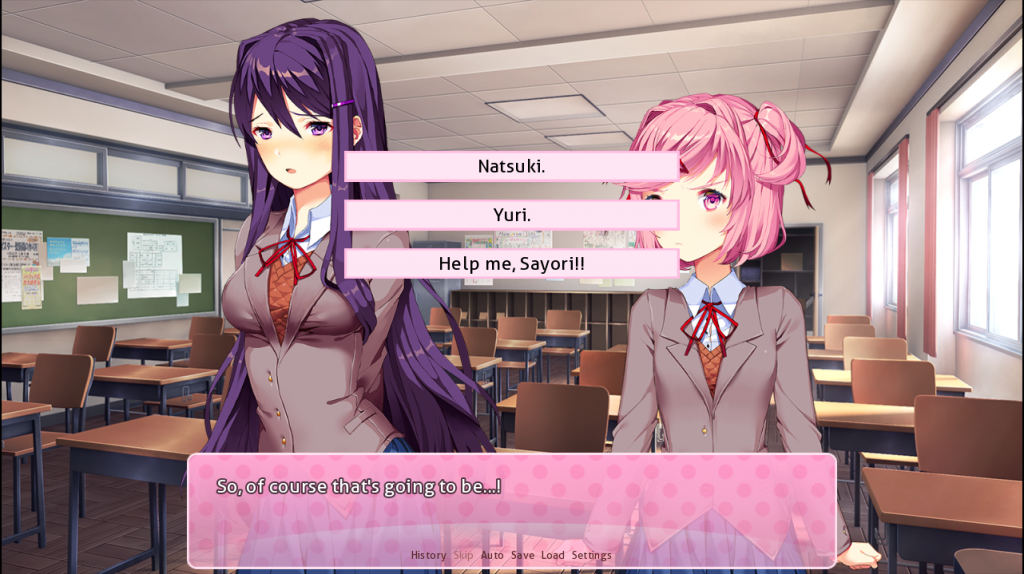The visual novel genre is as popular as it has ever been and is only continuing to grow. For my fellow gamers who have not fully dove into this world, here is a breakdown of its most crucial and defining characteristics, systems, and genres.
Visual novels are text-heavy narratives accompanied by animations or images to enhance the story and player experience. This genre is separated from the rest as it gives minimal focus on gameplay, instead opting to focus strongly on reading and decision-making.
The core systems and mechanics that are required for the Visual Novel (VN) genre are textual narratives that progress through clicking, static images portraying characters and backgrounds, choice-making, emphasis on sound design and soundtrack, and a varying degree of interactivity. Most VN's have multiple endings, though that is not a required part of the genre. Common verb-noun pairs are "ask out", "punch them", "kiss them", and "question them". Almost all VN's use a Japanese or Japanese-like art style. A slow pace is common across the genre, as it focuses heavily on character interaction. Difficulty is also standardized to be easy, as there is not much ability-based gameplay.

Some of the main genres of VN's include Romance, Nakige, Horror, and Kinetic. Romance is the most common and popular genre of visual novels. Romance VN's are essentially dating simulators, where the player usually encounters multiple possible dates. The choices the player makes determine who they end up with. Popular Romance VN's include:
The Fruit of Grisaia;
Dream Daddy;
Fate/Stay Night;
Rewrite;
School Days

Nakige VN's are VN's designed to make you cry. "Naki" translates to "weeping" in Japanese. These games are melancholy and sad but tend to have a happy ending. Classifying a VN as a Nakige is something that tends to be avoided, as some consider it a spoiler. Here are a few Nakige anyways if they sound like your thing and want to play some of them:
Inganock;
Bokuten;
Clannad;
Katawa Shoujo;
Sakura Moyu

Horror Vn's tell a dark and frightening story. They tend to use the typical visuals of VN's, to contrast with the heavy tone and scenes which are present throughout the game. Some visuals tend to lean towards what is typically considered horror. For those looking for a spook, here is where to find them:
Doki Doki Literature Club;
Danganronpa;
When They Cry 4;
Fata Morgana No Yakata;
Subarashiki Hibi;
Slow Damage;
Kinetic VN's opt out of using the typical choice-based gameplay system. Instead, Kinetic VN's tell a singular story (no multiple endings). There is no interactability, apart from the player clicking to progress the story. Also known as "sound novels". As with the rest, here are some Kinetic VN's:
If Found;
Seabed;
Planetarian;
Kikokugai;
NekoPara;

Did you like this post? Tell us
Leave a comment
Log in with your itch.io account to leave a comment.